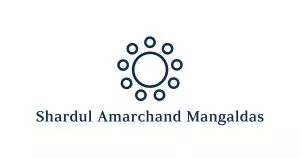- within Energy and Natural Resources, Antitrust/Competition Law and Environment topic(s)
- with readers working within the Automotive, Healthcare and Utilities industries
After a long hiatus, largely due to change of political dispensation, India and the United Kingdom ("UK") have been reported to have concluded negotiations on the Free Trade Agreement on 06 May 2025 ("FTA"), with the objective of formulating a trade deal that is based on mutual recognitions and transparency, with specific targeted sectors / services, premised on mutual benefit and fair and equitable treatment.
The FTA negotiations, first initiated on 13 January 2022, after 14 rounds of negotiations, is expected to increase exports in various sectors including in leather, textile, jewellery, marine and processed agricultural products (for India)1. While the fine print of the actual FTA text is still awaited, the arrangement contemplated thereunder is also expected to boost exports in service sectors like IT / IT-enabled services and also accord sector-specific benefits to players in the UK market, such as in the telecom market. The India-UK FTA could, therefore, contribute to integrating value chains and making them more resilient, especially given the present global disorder over tariffs and disturbances in supply chains.
While the complete text, including the specific provisions of the concluded FTA are pending public release, the UK government has indicated the key terms of the FTA, some of which are as below2:
- Robust and well-defined 'Rules of Origin' for effective enforcement
- In India, the Rules of Origin ("RoO"), which govern the determination of the 'nationality' of a good / service, in respect of various kinds of trade agreements, including Preferential Trade Agreements and Free Trade Agreements, is governed by the Customs (Administration of Rules of Origin under Trade Agreements) Rules, 2020 ("CAROTA Rules"). Each trade agreement separately notifies its own RoO, which sets out the specific origin criteria agreed upon by the countries. The CAROTA Rules establishes a procedure for claiming preferential tariff treatment (by satisfying the RoO threshold) and provides a framework for verification and compliance to prevent misuse and circumvention. While the structure of the RoO in trade agreements often aligns with GATT principles, such as the requirements for originating being wholly obtained or produced in the territory, undergoing a change in tariff sub-heading, etc., the applicable thresholds and product-specific rules are treaty-specific. The RoO, usually, also exclude minimal operations (such as simple mixing, bottling, affixing of labels, packaging, etc.) from conferring origin, as these are not generally considered to effect substantial transformation.
- Despite an established framework under CAROTA Rules and treaty-specific RoO, practical challenges persist in determining and enforcing origin requirements. Key among these are the ambiguity around what qualifies as "substantial transformation" and inconsistencies in treating minimal / substantial operations and tracing / computing the extent of bearing of third party sourcing and value addition requirements on overall determination of origin. Additionally, strategic structuring of production and production processed, such as routing goods through a country for superficial processing and transit route concerns, may enable circumvention, particularly where customs enforcement is limited or relies heavily on self-certification and incomplete documentation.
- Given these existing concerns in the international trade law and rules in effectively interpreting and enforcing RoO, during FTA negotiations, it appears that, UK was insistent on applying simpler RoO that reflect global contemporary supply chains3 and that reflect existing and future UK industry standards.
- UK's official publication on the FTA indicates that, British exporters will be permitted to use certain ingredients or materials sourced from third countries, provided the final product is substantially processed in either the UK or India. For instance, whiskey distilled in Northern Ireland can use barley or neutral grain spirit from the Republic of Ireland and can be bottled in transit, on the way to India, to qualify as being of British origin. The provisions are also expected to have robust anti-fraud provisions, preventing misuse by third-country exporters and prevent circumvention. It is also expected that vigorous mechanism will be put in place to ensure compliance and verification of products – to test whether they are wholly obtained from or significantly transformed in the UK or India.
- India and the UK, not being comparable in terms of manufacturing capacity, labour deployment and application of scientific/ technical standards, it does not appear to be feasible to have RoO under the FTA that are guided by solely UK standards.
- Specific sectoral fair market access for UK telecom suppliers to operate in India to establish a pro-competitive, transparent, and non-discriminatory framework for telecommunications' services trade between the UK and India.
- The FTA intends to facilitate UK telecommunications suppliers' entry into / expansion in the Indian market, including guaranteeing allocation and administration of critical and state-owned resources, such as spectrum and radio frequencies, in an open and objective manner.
- A key challenge could lie in the administration of spectrum and other state-owned resources, which are held in public trust. Past controversies, including some that have been drawn into prolonged litigations, such as the setting-aside of 2G spectrum allocation / quashing of licenses4, determination of Adjusted Gross Revenue (AGR)5 and its cascading financial implication on telecom licensees to the extent of driving some of the players into insolvency, and lobbying surrounding satellite spectrum allocation (whether to be administrative allocation or auctioned), as reported between Reliance Industries and Starlink6, raising potential concerns with policy / regulatory asymmetries in India. The FTA text is awaited to evaluate how such regulatory risks and uncertainty are intended to be deal with / mitigated.
- Implementation on non-trade environmental / sustainability measures in line with UK's climate and environmental goals, including achieving net-zero emissions by 2050.
- The FTA, while promoting non-trade sustainability measures intends to establish a sustainability sub-committee to oversee bilateral trade and investment in green sectors. India will partake in promotion of trade in environmental goods and services, including clean energy, sustainable forestry, marine fisheries, and the circular economy and will cooperate on emerging technologies with low global warming potential.
- Both the nations, who are parties to the Paris Agreement, which is a legally binding international treaty on climate change, made enforceable since 04 November 2016, have formalised their pursuit of net-zero emissions under the FTA.
- While encouraging trading in marine products, both countries, being nations that are along coast lines, thereby, having access to marine habitats and products, have expressed consciousness over unregulated / unreported fishing to avoid "overfished stocks" and "overfishing". Accordingly, the terms of the FTA with respect to sustainability measures, including in fisheries, are reported to reflect these commitments.
- While there is no clarity at present on the specific dispute resolution mechanism under the FTA, it may so be the case that the dispute resolution procedures will be addressed under the separately negotiated Bilateral Investment Treaty ("BIT"), with appropriate reference to fora such as International Centre for Settlement of Investment Disputes ("ICSID") or the WTO, as relevant. However, as seen in past FTAs, the absence of clear, consolidated dispute resolution provisions can give rise to uncertainty around how and when countries can seek recourse, particularly where exhaustion of mandatory local is required, or overlapping jurisdictions / bodies are involved. The dispute resolution mechanism will depend on how the FTA and BIT are ultimately aligned, and whether the relevant provisions provide sufficient clarity on process, timelines, and scope for efficacious dispute resolution.
- Apart from the afore-mentioned, the FTA is said to include important terms regarding participation of Small and Medium-sized Enterprises, subsidies (including not prescribing specifics of subsidy control arrangements but instead providing for transparency in granting subsidies), framework for intellectual property rights etc. Both the nations have also agreed to negotiate a reciprocal Double Contributions Convention (DCC) and BIT.
With the above, the FTA presents a promising opportunity for both nations to strengthen their economic ties and foster growth in key sectors such as trade in goods, services, clean energy, and sustainability, with its emphasis on reducing trade barriers, promoting transparency, and ensuring fair competition. Given India's past learnings and lessons, especially on enforcing origin rules towards also subverting the threat of circumvention and the challenges in the telecom sector, it remains to be see whether the FTA contains provisions for effective implementation and the trade efficacy of the measures proposed therein.
Footnotes
1. https://www.commerce.gov.in/wp-content/uploads/2025/04/LS-USQ-No.4875-dated.-01.04.2025.pdf
4. Centre for Public Interest Litigation v. Union of India, (2012) 3 SCC 1.
5. Union of India v. Association of Unified Telecom Service Providers of India, 2019 SCC OnLine SC 1393.
The content of this article is intended to provide a general guide to the subject matter. Specialist advice should be sought about your specific circumstances.




